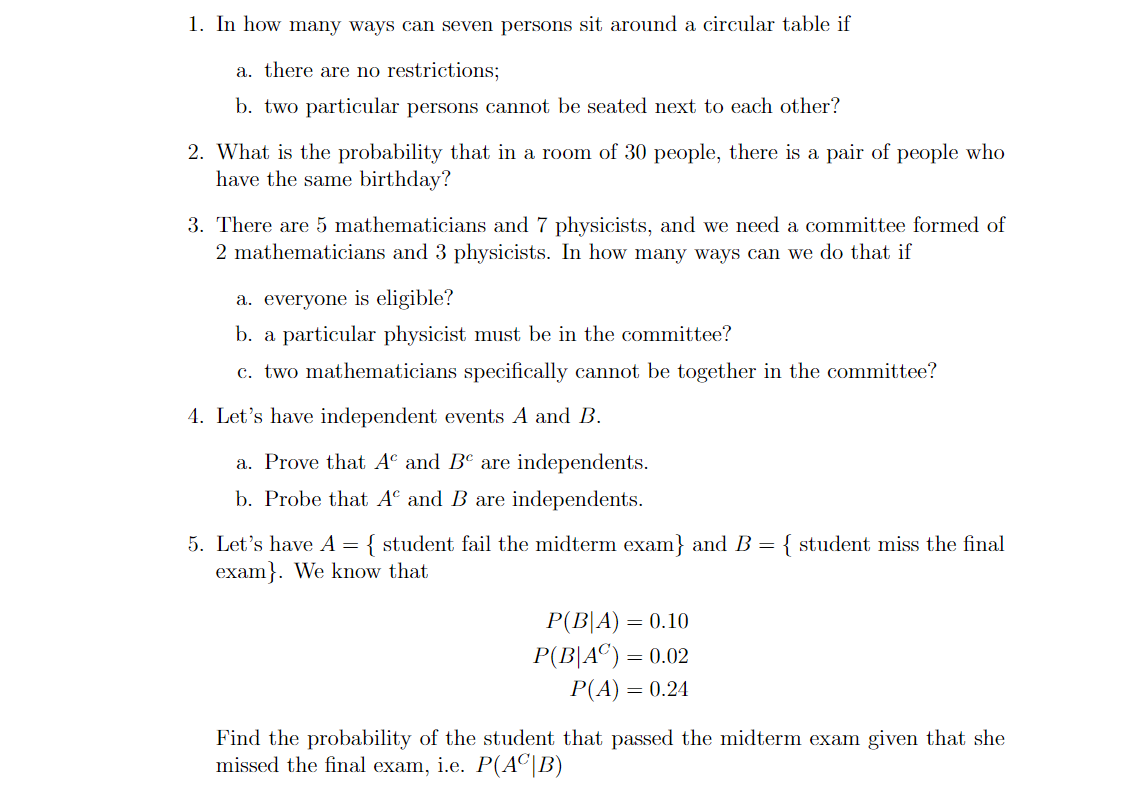Home /
Expert Answers /
Statistics and Probability /
1-in-how-many-ways-can-seven-persons-sit-around-a-circular-table-if-a-there-are-no-restrictions-pa430
(Solved): 1. In how many ways can seven persons sit around a circular table if a. there are no restrictions; ...
1. In how many ways can seven persons sit around a circular table if a. there are no restrictions; b. two particular persons cannot be seated next to each other? 2. What is the probability that in a room of 30 people, there is a pair of people who have the same birthday? 3. There are 5 mathematicians and 7 physicists, and we need a committee formed of 2 mathematicians and 3 physicists. In how many ways can we do that if a. everyone is eligible? b. a particular physicist must be in the committee? c. two mathematicians specifically cannot be together in the committee? 4. Let's have independent events \( A \) and \( B \). a. Prove that \( A^{c} \) and \( B^{c} \) are independents. b. Probe that \( A^{c} \) and \( B \) are independents. 5. Let's have \( A=\{ \) student fail the midterm exam \( \} \) and \( B=\{ \) student miss the final exam \( \} \). We know that \[ \begin{aligned} P(B \mid A) &=0.10 \\ P\left(B \mid A^{C}\right) &=0.02 \\ P(A) &=0.24 \end{aligned} \] Find the probability of the student that passed the midterm exam given that she missed the final exam, i.e. \( P\left(A^{C} \mid B\right) \)
